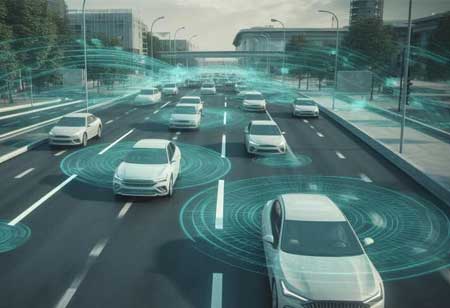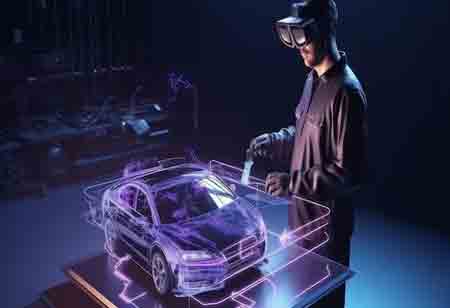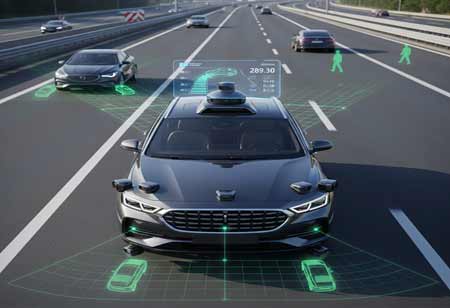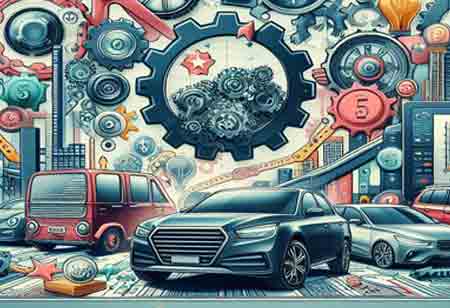THANK YOU FOR SUBSCRIBING
THANK YOU FOR SUBSCRIBING
Be first to read the latest tech news, Industry Leader's Insights, and CIO interviews of medium and large enterprises exclusively from Auto Tech Outlook

By
Auto Tech Outlook | Friday, October 03, 2025
Stay ahead of the industry with exclusive feature stories on the top companies, expert insights and the latest news delivered straight to your inbox. Subscribe today.
Collaboration between automakers, technology providers, and governments fosters the development of standardized frameworks essential for scaling autonomous mobility globally.
Fremont, CA: The evolution of autonomous vehicles (AVs) is transforming the transportation industry, promising safer, more efficient, and sustainable mobility. Next-generation solutions address the challenges of navigation, safety, scalability, and user experience. The advancements integrate cutting-edge technologies, such as artificial intelligence (AI), advanced sensors, high-definition mapping, 5G communication, and robust cybersecurity, to enable AVs to operate seamlessly in diverse and complex environments. AI algorithms process real-time data from sensors, cameras, and radar to recognize objects, predict behaviors, and make driving decisions.
Reinforcement learning further enhances these capabilities by allowing vehicles to learn from simulated and real-world driving experiences. The integration of generative AI facilitates scenario testing, enabling autonomous systems to anticipate and prepare for rare or unpredictable events, such as sudden pedestrian crossings or road obstructions. Sensor technology advancements are critical to improving the perception capabilities of AVs. Innovations in solid-state LiDAR, which is more compact and cost-effective, make high-resolution 3D mapping accessible for mainstream vehicles.
Another significant advancement is the development of high-definition (HD) mapping and localization. The maps and real-time updates from cloud-based systems ensure autonomous vehicles can navigate complex road networks precisely. Next-gen localization techniques, such as visual simultaneous localization and mapping (vSLAM), allow AVs to continuously update their position relative to their environment, even without GPS signals, which is crucial for urban canyons or tunnels. 5G and edge computing are revolutionizing the connectivity landscape for autonomous vehicles.
With ultra-low latency and high-speed data transfer, 5G networks enable real-time vehicle-to-everything (V2X) communication, allowing AVs to exchange information with other vehicles, infrastructure, and cloud systems. Edge computing processes data closer to the vehicle, reducing reliance on centralized cloud servers and enabling faster decision-making for time-sensitive scenarios, such as collision avoidance. Safety and cybersecurity are paramount for the success of AVs, and next-gen solutions are addressing these concerns with robust fail-safe systems and secure architectures.
Energy efficiency and sustainability are key drivers for next-gen autonomous vehicles, significantly as the automotive industry shifts toward electrification. AV manufacturers are integrating energy-efficient AI processors, lightweight materials, and aerodynamically optimized designs to reduce energy consumption. Autonomous electric vehicles (AEVs) are equipped with smart charging systems and battery optimization algorithms, enabling them to achieve longer ranges and lower operating costs. Some next-gen solutions also incorporate solar panels or regenerative braking systems to enhance energy efficiency further.
Voice-activated controls, augmented reality displays, and biometric authentication are becoming standard features, while adaptive seating and ambient lighting create customizable environments for passengers. AVs are integrated with ride-sharing platforms and mobility-as-a-service (MaaS) ecosystems, making autonomous transportation more accessible and convenient for users. From AI-powered decision-making and advanced sensor systems to 5G connectivity and sustainable design, these innovations are transforming how we think about transportation.
 Copyright © 2025 AutoTech Outlook. All Rights Reserved | Privacy Policy | Subscribe | Sitemap | About us | Feedback Policy | Editorial Policy
Copyright © 2025 AutoTech Outlook. All Rights Reserved | Privacy Policy | Subscribe | Sitemap | About us | Feedback Policy | Editorial Policy 
However, if you would like to share the information in this article, you may use the link below:
https://www.autotechoutlookapac.com/news/future-trends-of-autonomous-vehicles--nwid-1682.html




